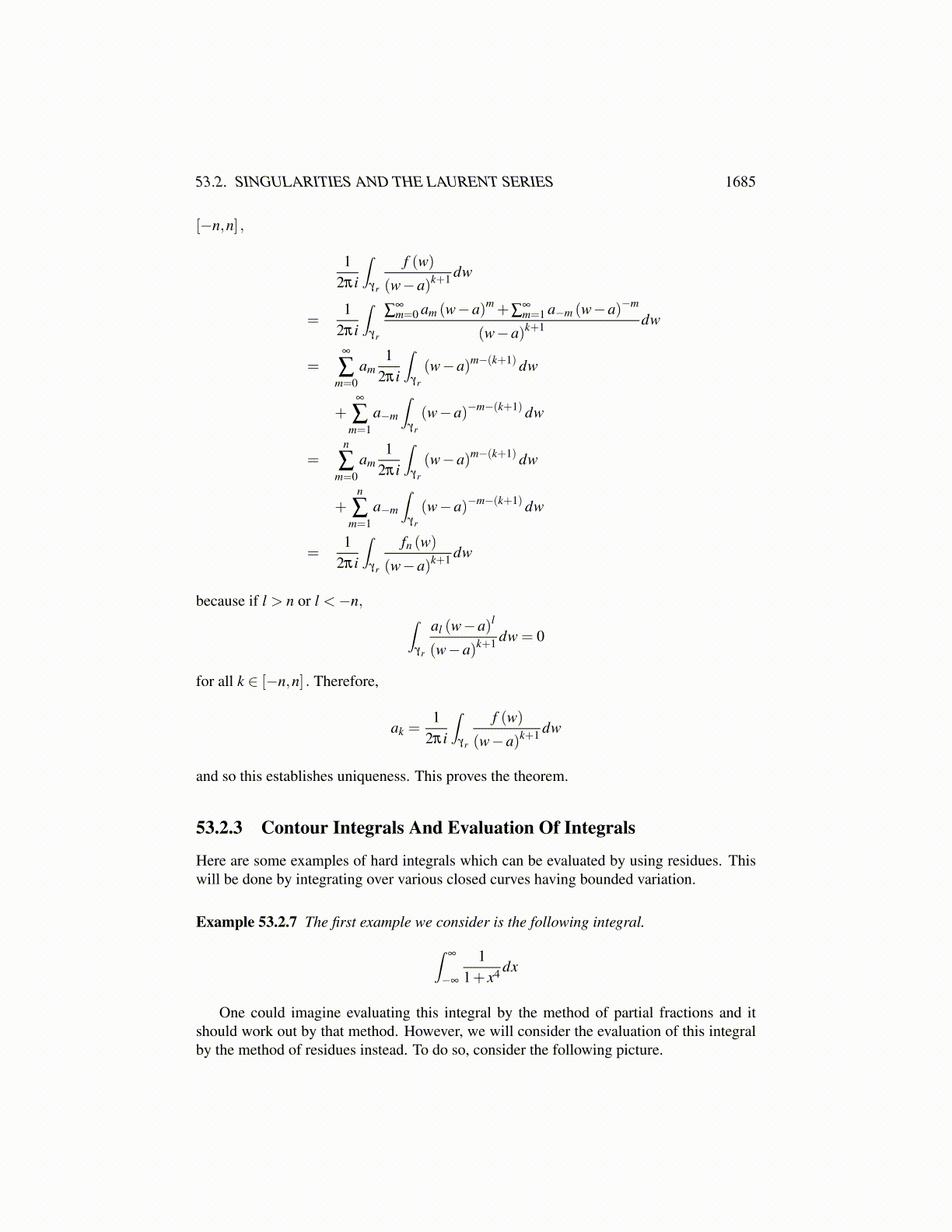
53.2. SINGULARITIES AND THE LAURENT SERIES 1685
a
z
γ1
γ2
Then using Lemma 53.2.2, if z /∈ ann(a,R1,R2) then
n(−γ1,z)+n(γ2,z) = 0
and if z ∈ ann(a,r1,r2) ,
n(−γ1,z)+n(γ2,z) = 1.
Therefore, by Theorem 51.7.19, for z ∈ ann(a,r1,r2)
f (z) =1
2πi
[∫−γ1
f (w)w− z
dw+∫
γ2
f (w)w− z
dw]
=1
2πi
[∫γ1
f (w)(z−a)
[1− w−a
z−a
]dw+∫
γ2
f (w)(w−a)
[1− z−a
w−a
]dw
]
=1
2πi
∫γ2
f (w)w−a
∞
∑n=0
(z−aw−a
)n
dw+
12πi
∫γ1
f (w)(z−a)
∞
∑n=0
(w−az−a
)n
dw. (53.2.7)
From the formula 53.2.7, it follows that for z ∈ ann(a,r1,r2), the terms in the first sum are
bounded by an expression of the form C(
r2r2+ε
)nwhile those in the second are bounded by
one of the form C(
r1−ε
r1
)nand so by the Weierstrass M test, the convergence is uniform and
so the integrals and the sums in the above formula may be interchanged and after renamingthe variable of summation, this yields
f (z) =∞
∑n=0
(1
2πi
∫γ2
f (w)
(w−a)n+1 dw
)(z−a)n+
−1
∑n=−∞
(1
2πi
∫γ1
f (w)
(w−a)n+1
)(z−a)n . (53.2.8)